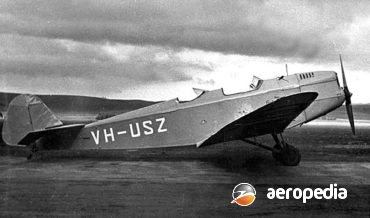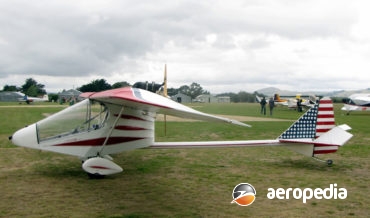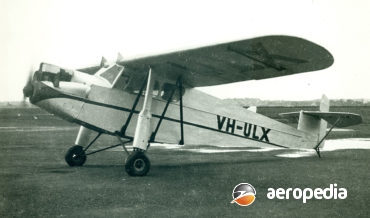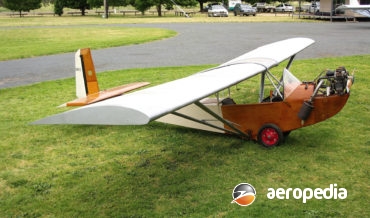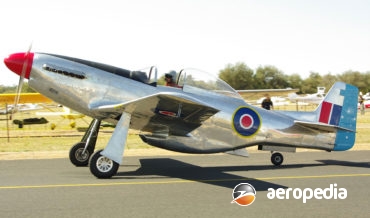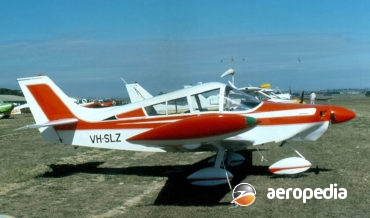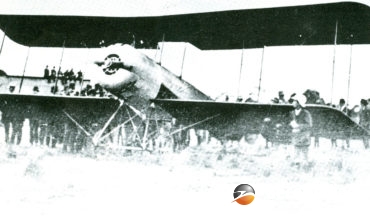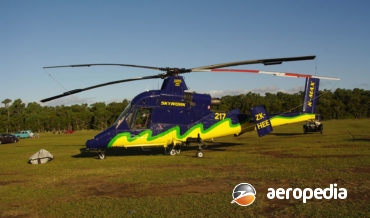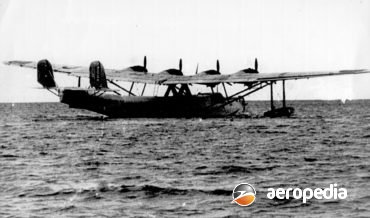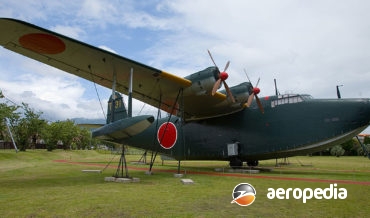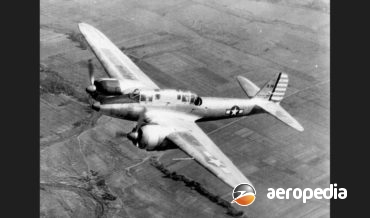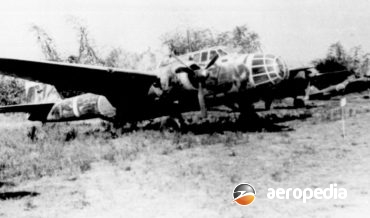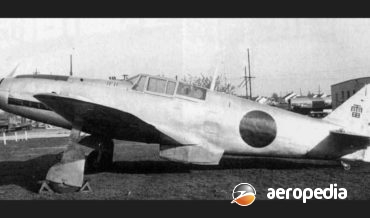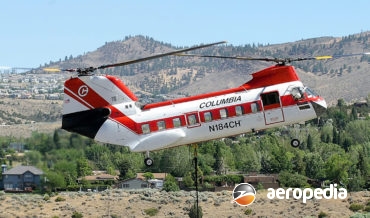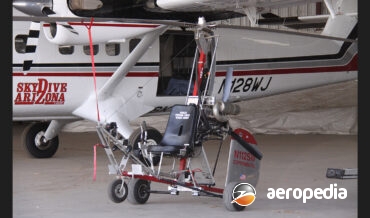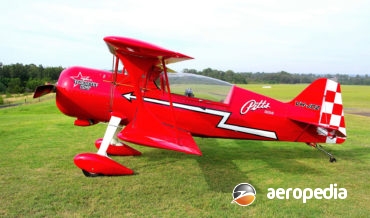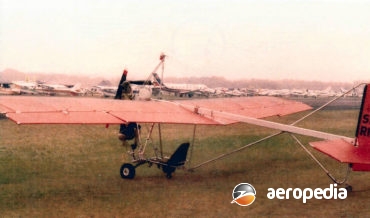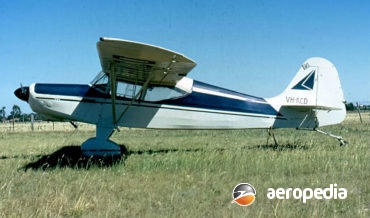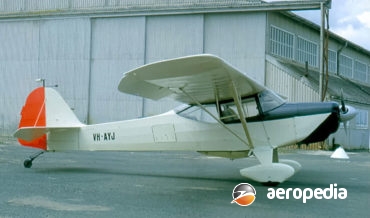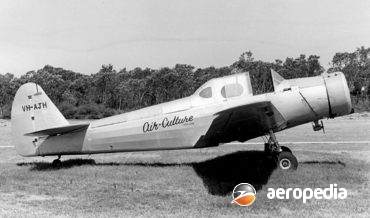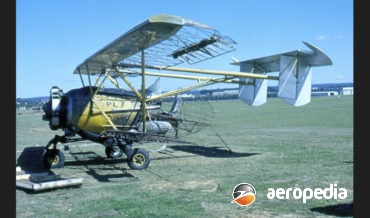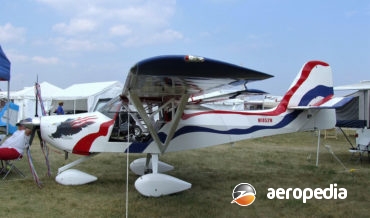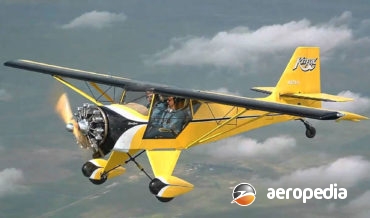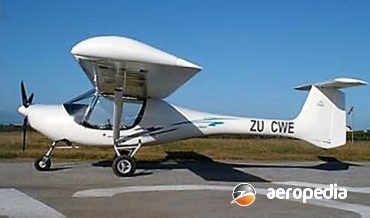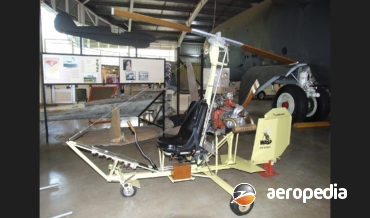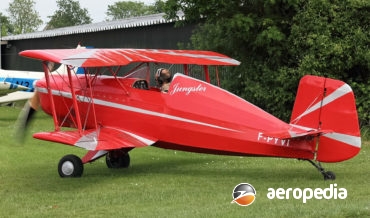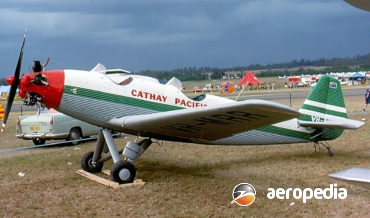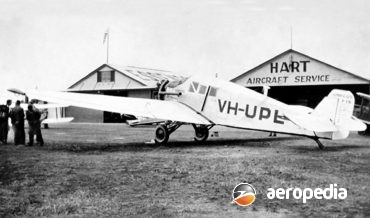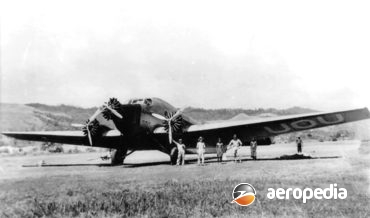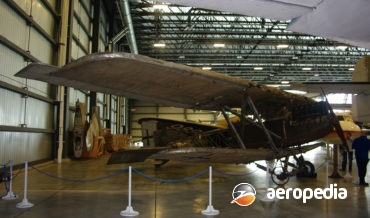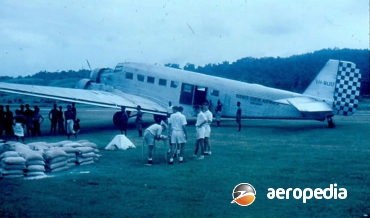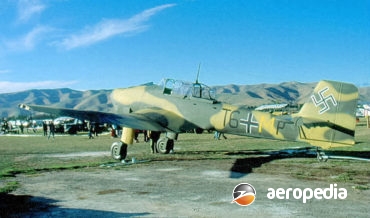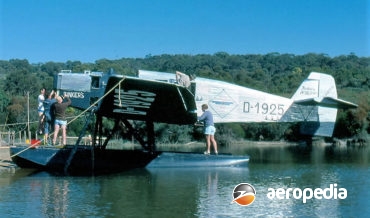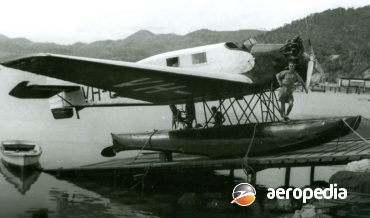David C. Eyre
Leichtflugzeugbau Klemm Gmbh of Boblingen, Wurtemberg, was the successor to the Daimler-Werke AG which first produced light aircraft in 1919.
David C. Eyre
- May 8, 2019
Kolb Aircraft in the United States produced a number of ultra-light aircraft designs. These include the Firefly with a 31-kw (42-hp) Rotax 447 engine; Kolbra with a 48-kw (65-hp) Rotax 582 and a STOL variant with a 60-kw (80-hp) Jabiru 2200 engine.
David C. Eyre
- May 8, 2019
The Firestar was produced by Kolb Aircraft in the United States in the 1980s as a single-seat ultra-light and had features of early models produced by the company but had the benefit of some years of development.
David C. Eyre
- May 8, 2019
For many years Holmer Kolb was involved in the design and construction of light aircraft of his own design and is considered one of the founders of the ultra-light movement in North America.
David C. Eyre
- May 8, 2019
In 1920 Frits Koolhoven returned to The Netherlands from the United Kingdom and became designer for the Nationale Vliegtuigindustie formed in The Hague and commenced designing a series of light aircraft.
David C. Eyre
- May 8, 2019
The Kostevc parasol aircraft was designed and built by Joseph Kostevc of Goonelaba, a small town near Lismore, NSW.
David C. Eyre
- May 8, 2019
This aircraft was an 80-percent scale custom-built replica of a North American P-51K Mustang and was designed and built by Mr Terrence Kronke in Queensland, although the wingspan was built to 72% scale. It is described as a P-51 Scale Mustang and was registered to the builder on 1 December
David C. Eyre
- May 8, 2019
Developed from the Minicab GY-201, which was designed by Yves Gardan in France, the Cavalier is a redesign of that aircraft, which was also aimed at the amateur construction market.
David C. Eyre
- May 8, 2019
In 1914 the Kalgoorlie Aeroplane Syndicate was formed with the aim of building a two-seat biplane fitted with a 37-kw (50-hp) Gnome rotary engine. Chief constructor of the machine was Mr A E Geere, who served his apprenticeship with VICkers Aircraft Co in the UK. He had obtained pilot’s licence
David C. Eyre
- May 8, 2019
The K-Max was designed and built by Kaman Aerospace as an affordable, medium-lift helicopter able to perform vertical lifts and suited for emergency response missions ranging from fire-fighting and disaster relief to search and rescue, power line work, and timber harvesting. A variant developed was the Firemax, a heli-tanker model
David C. Eyre
- May 8, 2019
The Seasprite has had a remarkably long life in service with the US Navy, the contract for its design being issued in 1957. Since then it has been built in relatively small numbers, some 250 or so machines initially, but those built have been the subject of a considerable number
David C. Eyre
- May 8, 2019
The Ka-32 is the designation for the civil series of helicopters produced for the Soviet military forces under the designation Ka-25/27 and given the code names “Hormone” and “Helix”. Basically designed for anti-submarine warfare, the prototype appeared in 1981. Nikolai Ilytich Kamov was one of the lesser known Soviet designers
David C. Eyre
- May 8, 2019
In 1934 the Imperial Japanese Navy issued specifications for a long-range flying boat, and Kawanishi appointed a design team headed by Shizuo Kikuttara. The prototype, the Kawanishi Type 97, powered by Nakajima Kikari 2 nine-cylinder radial engines, commenced flight testing on 14 July 1936. Some problems were experienced with hydrodynamics
David C. Eyre
- May 8, 2019
In August 1938 the Imperial Japanese Navy issued an order for a successor to be designed and built to replace the Navy Type 97 Flying Boat Model I, this requiring a cruising range of 7,410 km (4,604 miles), a heavy armament, and the ability to carry two 1,000 kg (2,204
David C. Eyre
- May 8, 2019
The Kawasaki Ki-45 Toryu (Dragon Killer) – known to the allies as Nick – was an important part of the Japanese Armys fighter fleet in the Pacific and saw service through the War in a number of roles. In December 1937 Kawasaki initiated design of the Ki-45, a two-seat fighter
David C. Eyre
- May 8, 2019
In 1937 the Japanese Army sought an aircraft manufacturer to provide a design for a high-performance twin-engine light bomber with a crew of four, and Kawasaki Kokuki Kogyo K with a team lead by Takeo Doi, provided a design for a cantilever mid-wing monoplane powered initially by two 709-kw (950-hp)
David C. Eyre
- May 8, 2019
In February 1940 Kawasaki Kokuki Kogyo KK was asked to design a fighter around the licence built Daimler-Benz DB 601A twelve-cylinder VEE engine, and to this end the Ki-60 evolved, the prototype flying in March 1941. Initial trials were not particularly successful, and the aircraft was redesigned as the Ki.61
David C. Eyre
- May 8, 2019
The Kawasaki KV-107 was a licence-built version of the Boeing Vertol Model 107 which had been supplied to the US and other military forces as the H-46 Sea Knight and which had been produced in a variety of models to meet a number of operational needs. In 1965 Kawasaki acquired
David C. Eyre
- May 8, 2019
Ken Brock Manufacturing Inc of Stanton, California since 1957 has been building a series of single-seat open frame gyroplanes, models including the KB-2 and KB-3. Similar in appearance to the Bensen series, which first became available in 1953, a number of refinements were made to that design including a modified
David C. Eyre
- May 8, 2019
The Homebuilt 12 is a development by Jim Kimball Enterprises Inc of Zellwood, Florida to make the Pitts S-2 Special series into a more powerful aircraft for unlimited aerobatics to compete against other types of aircraft in this category.
David C. Eyre
- May 8, 2019
The Sky-Rider was an ultra-light aircraft designed by Gareth Kimberley in 1978, he at that time being employed by Qantas as a Boeing 747 Captain and had an interest in hang gliding.
David C. Eyre
- May 8, 2019
In 1959 Bankstown, NSW based Kingsford Smith Aviation Service Pty Ltd set up a company, Austerserve Pty Ltd, to modify and improve Austers imported from the United Kingdom.
David C. Eyre
- May 8, 2019
The Kingsmith was a further effort by Kingsford Smith Aviation Service of Bankstown, NSW to modernize the Auster series of aircraft, in this case using an Auster J-1 Autocrat for the conversion.
David C. Eyre
- May 8, 2019
The KS-3 agricultural aircraft was the forerunner of the Yeoman Cropmaster, and was built at Bankstown, NSW, by Kingsford Smith Aviation Services in the 1950s.
David C. Eyre
- May 8, 2019
In 1954 the need was seen by Kingsford Smith Aviation Services Pty Ltd of Bankstow, NSW for a large, high powered, agricultural aircraft of simple construction to replace the de Havilland Tiger Moth then in widespread use.
David C. Eyre
- May 8, 2019
This aircraft stemmed in 1998 from a series of light aircraft designed by Dan Denney. The Lite was an ultralight trainer aimed as the US Sports Pilot Program. It has been produced in kit form and is available in tricycle undercarriage configuration.
David C. Eyre
- May 8, 2019
Daniel Denney of Denny Aerocraft over the years has developed a number of light aircraft for recreational use, most able to be fitted with a tailwheel, tricycle undercarriage, and may be fitted with skis or floats.
David C. Eyre
- May 8, 2019
The JS-3 Rapture is one of a series of high performance gliders built in South Africa by Jonker Sailplanes the first model being the JS-1, the prototype of which flew for the first time on 12 December 2006 and the company immediately became known as a builder of world-class sailplanes.
David C. Eyre
- May 8, 2019
The Jora was a light aircraft produced in the Czech Republic produced by Jora SRO in Vraclav. Looking very similar to the Fantasy Air Cora, which made its public debut at the Fredrichshafen Air Show in Germany in May 1997, it becamepopular due to its low cost and good performance.
David C. Eyre
- May 8, 2019
The McCandless M-4 Gyroplane was a British single-seater ultra-light autogyro first flown in 1961 and was initially powered by a Triumph motor-cycle engine, this later being replaced by a Norton motor-cycle engine but this was also found not to be suitable for installation in such a machine and was abandoned
David C. Eyre
- May 8, 2019
Designed by Rimn Isaminskas in Los Angeles, an aeronautical engineer, the Jungster series of light aircraft were simple, strong aircraft, the Jungster I being an aerobatic biplane. The design was based on the German wartime aerobatic training biplane, the Bucker Jungmeister. Designed in 1962 and built to 80% scale, the
David C. Eyre
- May 8, 2019
The prototype of the Junkers A-50 tandem two-seat, all-metal, light monoplane was flown for the first time in 1928.
David C. Eyre
- May 8, 2019
The F.13 was a development of a series of light transports designed by Professor Hugo Junkers, they all being all-metal monoplanes with corrugated skinning to provide strength.
David C. Eyre
- May 8, 2019
The Junkers G.31 series of commercial transports was one of the success stories of the 1930s, and its operation in New Guinea in the freight role has gone down as one of the important annals in aviation history.
David C. Eyre
- May 8, 2019
It seems there were two Junkers J.1 aircraft, the first, the Blechesel,known as the‘Tin Donkey” or “Sheet Metal Donkey” being the world’s first practical all-metal monoplane and appeared at the beginning of World War
David C. Eyre
- May 8, 2019
The workhorse of the German Luftwaffe in the transport role during World War II, the prototype Ju-52/ba (D-1974)
David C. Eyre
- May 8, 2019
In the 1930s the German aviation industry was attempting to develop a new aeronautical prestige on an international basis
David C. Eyre
- May 8, 2019
Designed and built by Junkers Flugzeug Und Motorenwerke A-G, the Ju 87, known as the Stuka was perhaps the most famous dive-bomber of World War II.
David C. Eyre
- May 8, 2019
The W-33 was developed by Junkers concurrently with the W-34 series, both being virtually identical, and in the ultimate a development of the F-13.
David C. Eyre
- May 8, 2019
The W.34 series was developed concurrently with the W.33 by Junkers using virtually an identical basic design, and both were refinements of the F.13 and built as general purpose transports.
David C. Eyre
- May 8, 2019
Recent Comments
Archives
Categories
- No categories
Categories
- No categories
Latest Posts
Newsletter

